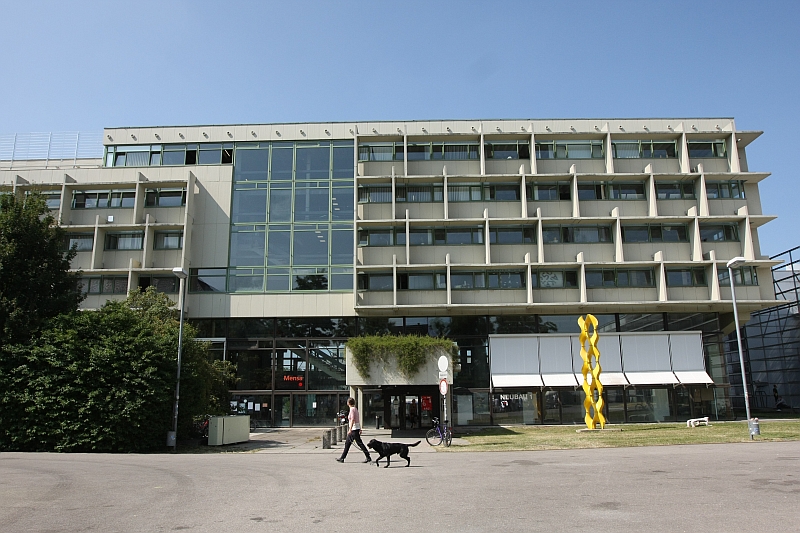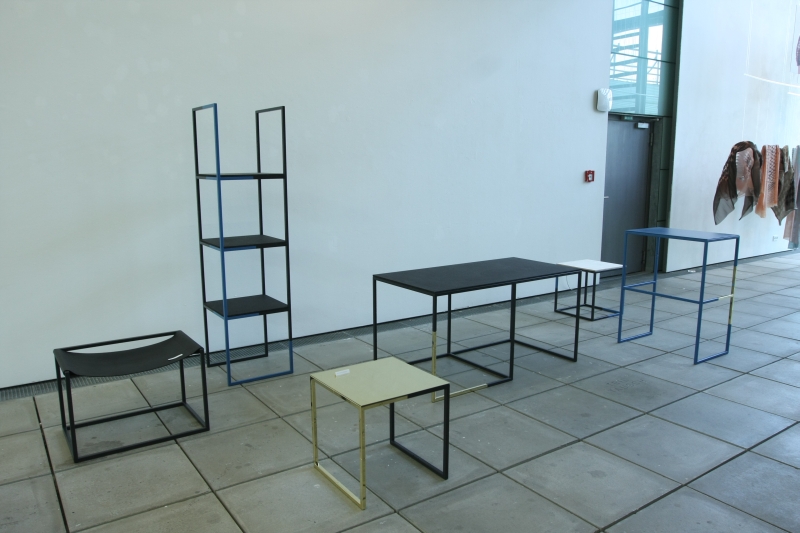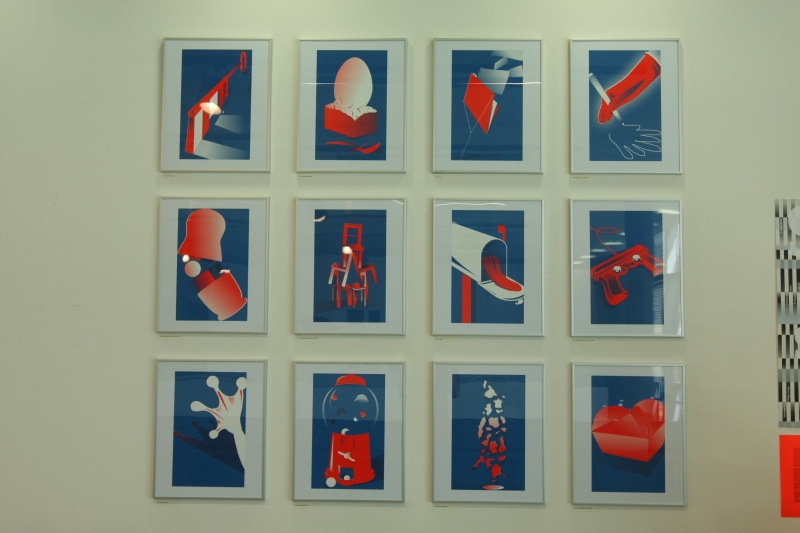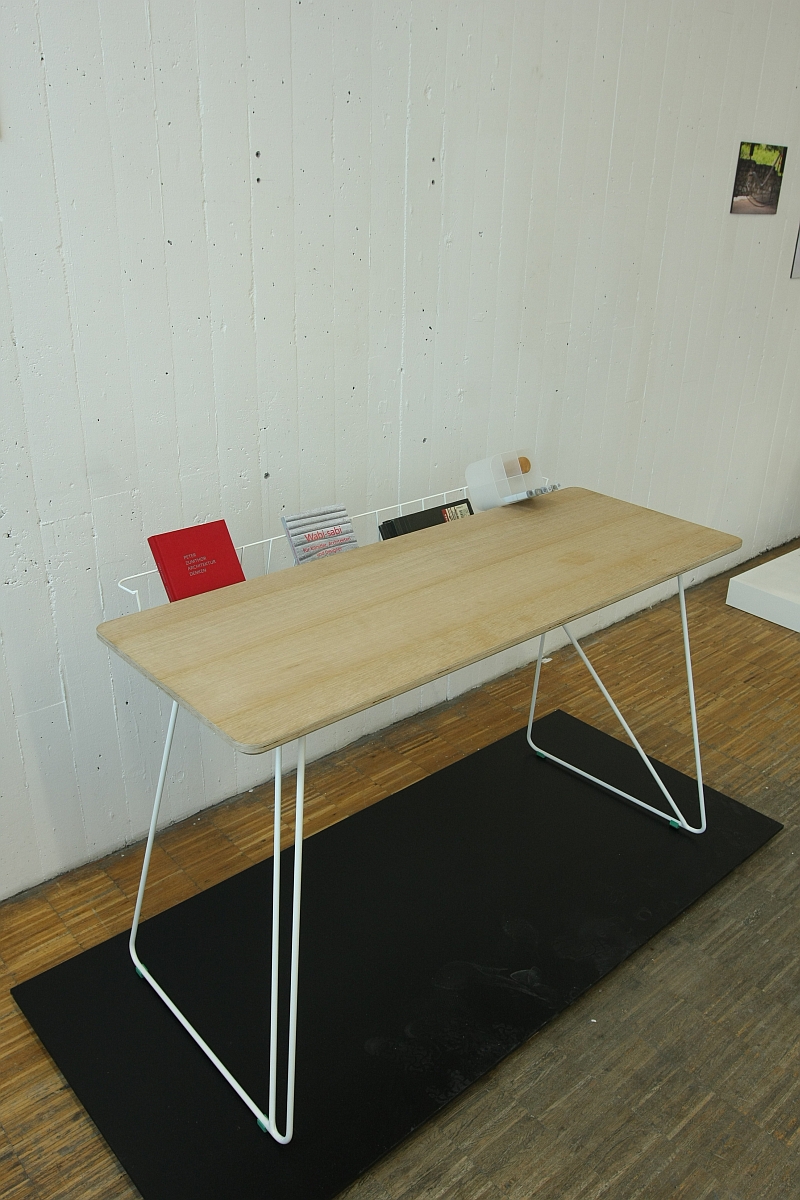Akademie der Bildenden Künste Stuttgart: Rundgang 2013
As any fool know, we traditionally begin our round-up of the summer semester student shows at the Bauhaus University Weimar. This year however Thüringen is having to yield to Stuttgart, and specifically the Akademie der Bildenden Künste Stuttgart.

Neubau 2 at the Akademie der Bildenden Künste Stuttgart. Home of the Architecture and Industrial Design departments.
In relation to institutions such as the Bauhaus Uni Weimar or Burg Giebichenstein Halle, the Industrial Design department at the Akademie der Bildenden Künste Stuttgart is relatively small, but no less interesting. For the 2013 Rundgang there were “only” three Diploma projects on display, and from them we were very impressed with Teil Tausch by Isabel Thoma.
And believe us, a 33% “like” rate is almost unheard of for us.
Teil Tausch is a modular furniture system based around what one could call the “smallest number of usable units” principle.
Specifically the Teil Tausch system is composed of five standardised forms that can be connected at will to create furniture of virtually any shape, size, form or function. The metal components are held together by a connector specially developed for the system while panels in a range of materials are available for use as shelves, seats or table tops.
Although the modular furniture system per se isn’t particularly revolutionary, what attracted us to Teil Tausch is on the one hand the anonymity of the system: the design is not the star, the resulting object is all the matters. And on the other the fact that it clearly hasn’t been developed with just storage in mind. Tables and chairs, for example, are just as natural a part of the concept as shelving. Something that for us sets Teil Tausch above all current market-ready products of this ilk. And we’re certainly looking forward to seeing how it develops in the coming years.
For the sake of completion the other Industrial Design diploma projects on show were Formbegriff by Laura Hillebrandt, a porcelain and glass tableware collection inspired by the way we use such and Mensch by Jennifer Hiler, a series of objects developed to encourage movement, interaction and sport in general amongst children.
We’re not saying that they weren’t good. They just didn’t rock our boat.
And design is subjective.
Away from the Diploma projects there were an awful lot of bicycles to be found in the ABK Stuttgart Industrial Design department. Obviously we ignored the motorised version, paid polite attention to the electrical version and ultimately devoted most of our time to the cargo versions: both those in the actual Cargo Bike project exhibition as well as the carrying rack system developed in a free project by Marita Schwenkedel.
The Cargo Bike project asked the participants to develop a “service bike” – so not further develop the bicycle per se, but to develop new functions for bicycles.
While most of the resulting models concerned themselves somewhat logically with the transportation of goods, we only really had eyes for the bicycle lawnmower Grazer by a sadly unnamed student. We have no idea if it works, we suspect it doesn’t. We don’t care. It should be further developed until it does. Any problems are almost certainly related to the cutting power of the blades and the associated resistance.
Such problems can, like the French, always be overcome.
Marita Schwenkedel’s fiXit removable carrying rack system is in contrast a deliciously simple piece of design for our modern world: an aesthetically confident carrying rack/basket that can be effortlessly fixed on to or removed from the saddle bar. On the basis of the version on display in Stuttgart it looks as if Marita has also developed a mounting point for the system. Obviously no bad thing; however, given the number of saddle bar mounted children’s bike seats in Germany, a system that allows the racks to be attached to the existing chair mount would appear to make just as much, if not more, sense.
However, as ever, what do we know.
Bicycles aside we were also impressed with the metal lounger BCHAIR by Antonia Rindfleisch, the kitchen helper/storage unit Nou by Hannah Steinmetz and especially impressed by the desk Fünfundvierzig by Penghao Shan with its intelligently reduced form and metal wire storage basket. Our only appeal would be for a more articulate method to attach desk top to desk frame. The method presented at the Rundgang didn’t so much resemble a late afterthought as a quick emergency repair of a late afterthought.
And a special mention must also go to Philipp Staege for his Communication Design Diploma project. If it had a name we sadly didn’t see it, probably because we were so entranced by the uncommonly elegant textures and tones in his graphics.
People often ask us why we visit student exhibitions. What can there possibly be in it for us? Especially when we seem to spend most of our time complaining.
The answer is simply that students are free from any form of commercial or professional pressure.
Or looking at it from the other perspective, as Jürgen Laub recently summed up the role of the industrial designer “… ultimately manufacturers commission us to produce successful products“.
Students don’t have to.
And in this freedom lies the possibility to explore new approaches, new solutions, new realities.
Most students don’t take that chance. Most rely on tried and tested formulas working to a sort of “Design View”, giving the public what they expect and re-hashing hackneyed old concepts and form-languages.
But not all.
Just occasionally, just occasionally one finds a student who can think out of the box, who understands the old snowboard mantra that beaten paths are for beaten men and who risks something new.
And even if from 100,000 projects just one causes goose bumps of delight, that is more than enough.
For us the ABK Stuttgart Rundgang 2013 perfectly proved that point.
A selection of impressions from the Akademie der Bildenden Künste Stuttgart Rundgang 2013 can be found at facebook.com/smow.stuttgart
And as we were in Stuttgart we naturally took the opportunity to pop over to Karlsruhe to view the Hochschule für Gestaltung’s summer semester student exhibition….
Tagged with: Akademie der Bildenden Künste Stuttgart, Stuttgart


